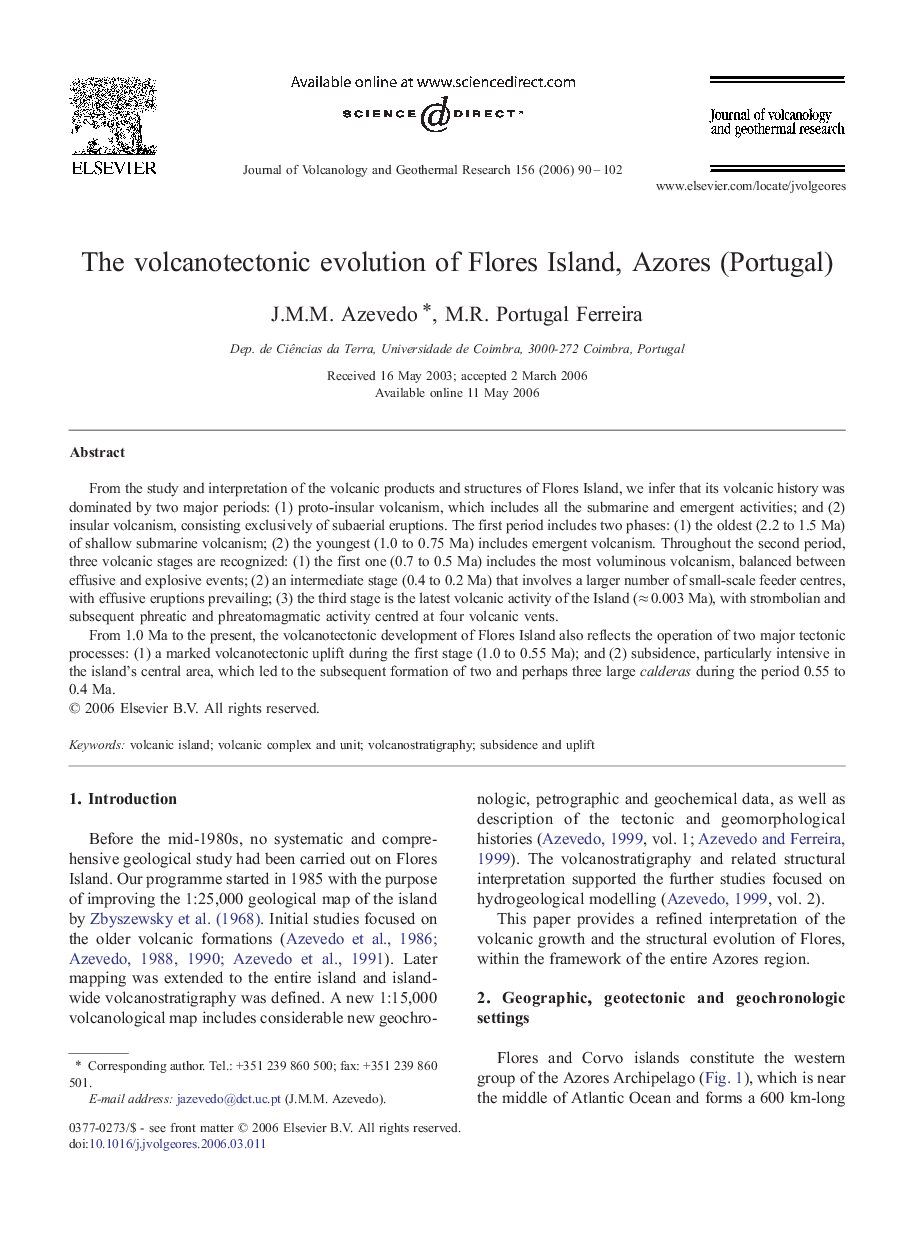| Article ID | Journal | Published Year | Pages | File Type |
|---|---|---|---|---|
| 4714990 | Journal of Volcanology and Geothermal Research | 2006 | 13 Pages |
From the study and interpretation of the volcanic products and structures of Flores Island, we infer that its volcanic history was dominated by two major periods: (1) proto-insular volcanism, which includes all the submarine and emergent activities; and (2) insular volcanism, consisting exclusively of subaerial eruptions. The first period includes two phases: (1) the oldest (2.2 to 1.5 Ma) of shallow submarine volcanism; (2) the youngest (1.0 to 0.75 Ma) includes emergent volcanism. Throughout the second period, three volcanic stages are recognized: (1) the first one (0.7 to 0.5 Ma) includes the most voluminous volcanism, balanced between effusive and explosive events; (2) an intermediate stage (0.4 to 0.2 Ma) that involves a larger number of small-scale feeder centres, with effusive eruptions prevailing; (3) the third stage is the latest volcanic activity of the Island (≈ 0.003 Ma), with strombolian and subsequent phreatic and phreatomagmatic activity centred at four volcanic vents.From 1.0 Ma to the present, the volcanotectonic development of Flores Island also reflects the operation of two major tectonic processes: (1) a marked volcanotectonic uplift during the first stage (1.0 to 0.55 Ma); and (2) subsidence, particularly intensive in the island's central area, which led to the subsequent formation of two and perhaps three large calderas during the period 0.55 to 0.4 Ma.
